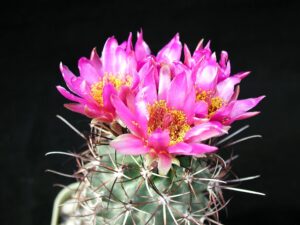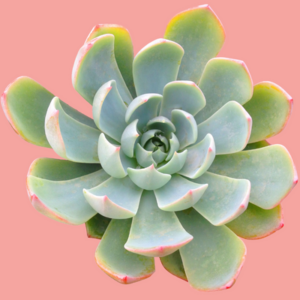Succulent plants, known for their thick, fleshy tissues that store water, have surged in popularity in recent years. These intriguing plants offer a diverse range of textures, colors, and forms, making them a perennial favorite among gardeners and indoor plant enthusiasts alike. While they primarily thrive in arid conditions, their unique beauty can complement any environment. This visual guide will feature various succulent varieties, shedding light on their characteristics and care requirements to aid in your purchasing decisions.
Understanding the distinct types of succulents can help potential buyers select the most suitable plants for their homes. This article will outline notable succulent families, common varieties within those groups, and practical tips for maintaining these hardy plants.
Here, we focus on addressing crucial buyer concerns, such as growth habits, care, and adaptability. By delving into this diverse plant category, green thumbs and novices alike can make informed choices when selecting their next succulent companion.
Succulent Families: A Flourishing Array of Options
Among the vast multitude of succulent plants, several families stand out due to their adaptability and unique charm. Understanding these families can provide insight into their varying needs and aesthetic contributions to your living space.
Cactaceae: The Iconic Cactus Family
Cacti are perhaps the most recognized succulents, boasting a wide array of forms, from the familiar spherical shapes to tall, columnar varieties. These plants are often adorned with distinctive spines or hair-like glochids that deter herbivores.
Subfamilies like Opuntioideae, which includes the prickly pear, introduce fruit-bearing options that can offer both beauty and edibility. The resilient nature of cacti makes them an ideal choice for beginners; they thrive on minimal care, making them perfect for busy lifestyles. Ensure that your cactus receives plenty of sunlight and reduce watering to avoid root rot.
Aloe: Medical Marvels and Decorative Delights
The Aloe genus comprises various species famed for their medical properties and ornamental value. Aloe vera, a household staple, is cherished for its soothing gel commonly used in skincare.
This succulent typically exhibits long, serrated leaves and a rosette formation. Other varieties, such as Aloe ferox, with its towering flower spikes, and Aloe brevifolia, known for its compactness, add diversity to any collection. Most aloes prefer bright, indirect light and need well-draining soil to prevent moisture accumulation.
Echeveria: The Rosette Wonders
Echeverias are characterized by their intricate rosettes and stunning color palettes that range from muted greens to vibrant purples. These succulents are particularly popular among collectors due to their beautiful inflorescences and compact growth habits.
Among the most well-known varieties are Echeveria elegans, also known as the Mexican Snowball, and Echeveria ‘Lola,’ which flaunts delicate pink hues. Echeverias thrive under bright light and require moderate watering. A porous mix will promote healthy rooting, ensuring continued growth.
Understanding Growth Habits: Making the Right Choice for Your Space
Succulents display a variety of growth patterns, influencing how and where they can be displayed within a home or garden. When purchasing succulents, it is essential to consider their final size, spacing requirements, and moisture preferences.
Creeping vs. Upright Succulents
Semi-terrestrial varieties, such as Sedum reflexum, thrive by spilling over the edges of containers or rock gardens, creating a cascading effect that adds layers of interest. Conversely, upright forms like Haworthia fasciata present a more structured appeal—boasting rosettes that reach for the light. Each growth style serves a specific design purpose and may require tailored care strategies.
Consider the available space in your home. If you wish to cultivate succulents for tabletop decor, select smaller rosette forms or trailing species. For larger outdoor gardens, consider incorporating taller varieties to create natural focal points.
Care and Maintenance Tips: Ensuring Longevity and Health
Once you commit to growing succulent plants, knowing how to care for them is crucial for their prosperity. Here are key considerations when maintaining these resilient botanicals.
Lighting Requirements
Most succulents flourish in bright, indirect sunlight. Certain species may tolerate direct sunlight, while others prefer a semi-shaded environment. Familiarize yourself with the specific light needs of your chosen varieties to prevent sunburn or etiolation.
Watering Wisely
Overwatering is the bane of succulent care. To maintain healthy roots, allow the soil to dry out completely between watering sessions. Adopt a “soak and dry” approach, ensuring that water thoroughly drips from the drainage hole. During winter months, reduce watering frequency to accommodate their dormant phase.
Soil Composition
A well-draining soil is essential for succulents to thrive. Utilizing a specialized cactus mix or amending potting soil with perlite or coarse sand will enhance drainage and air circulation. This is vital in preventing rot and encouraging robust growth.
Conclusion: Curating Your Succulent Collection
Whether you’re a novice or a seasoned plant enthusiast, succulents offer an enchanting way to incorporate low-maintenance greenery into your life. Understanding the various succulent families, growth patterns, and care tips allows for informed purchasing decisions and long-term plant enjoyment. By selecting the right plants and providing proper care, you can create a flourishing succulent collection that adds beauty and character to your space.





Leave a Comment